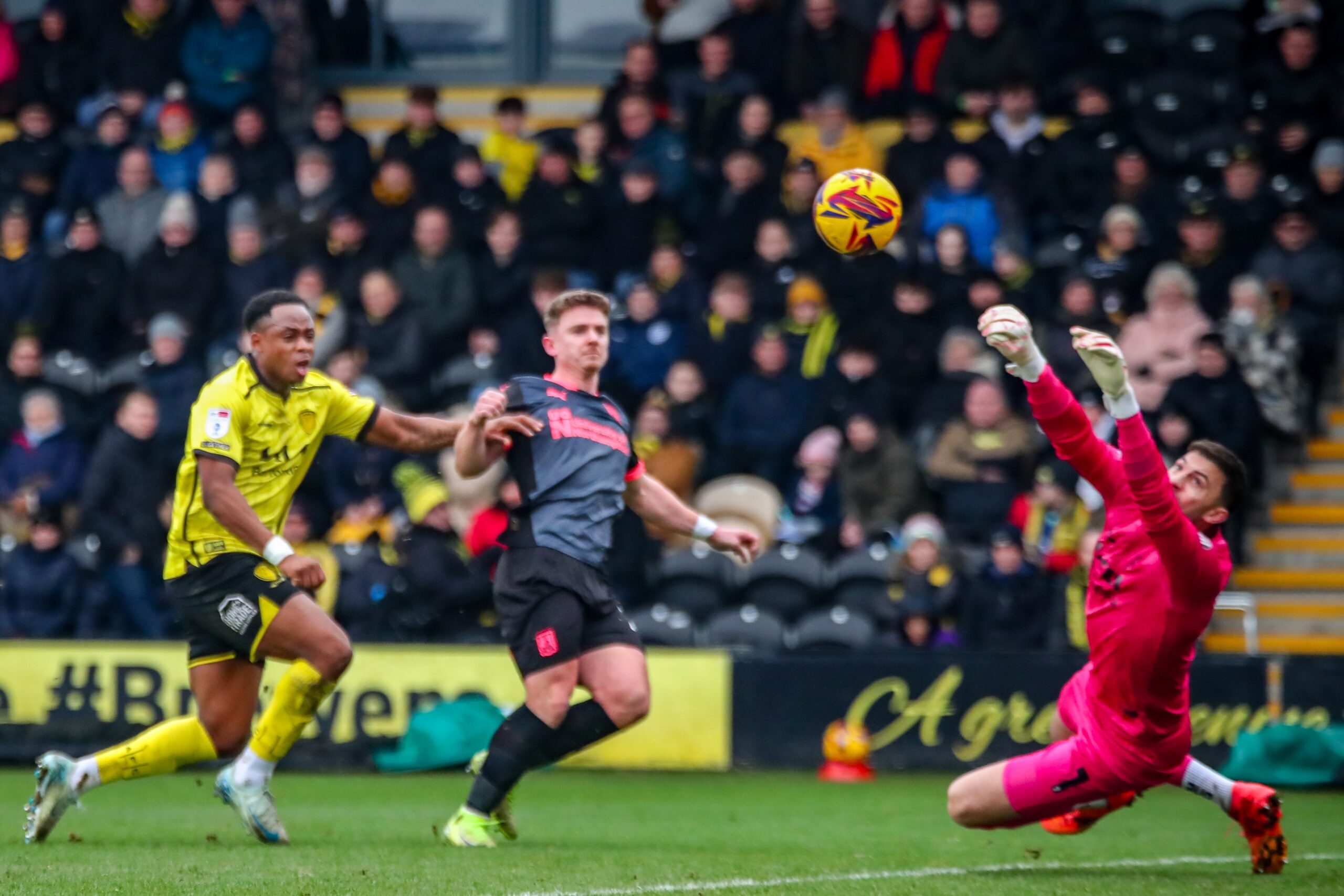
How the Miracle on Grass produced a great escape for Burton Albion
Written by
Dominic Jordan
May 27, 2025
When Burton Albion appointed Gary Bowyer as Manager on 17th December 2024, they were nine points adrift of safety in League One with two wins from 19 games. However, thanks to his expertise and with the help of Dominic Jordan – Chief Data Officer of Twelve Football – they survived with one game remaining. This is the story of how it happened – in Jordan’s own words.
______________________________________________________________________________________________________
While I’ve worked with clubs that have won the biggest trophies in the sport, this was honestly one of the most enjoyable spells of my career. And it came down to some pretty simple things:
- Creation of alignment – The leadership at Burton were totally aligned on what was required to achieve their goal and the 10 key metrics that Ágúst Pálmason Morthens of Twelve Football produced meant there was a shared language for tracking progress towards the goal.
- Alignment simplified decision-making – The inspired appointment of Gary Bowyer as head coach, identifying the right players… it all became much easier when there was a clear sense of what success looked like and what would constitute a mistake.
- Simplicity led to clarity – I never spoke about set pieces, but finding the low hanging fruit helped to change the approach to them. Michael Mackin and the coaches did a fantastic job in turning round one of the worst set piece records in League One to make it into one of the best.
- Clarity allowed focus – Even when results weren’t going their way, the club could focus on the process, not panic. They stuck to the plan, and it paid off.
In the end, yes, the ball bounced Burton’s way when it mattered most – but they’d created the conditions to take advantage when it did. As [American football coach] Bill Walsh put it: set the right conditions, stay aligned, simplify, focus… and “the score will take care of itself.”
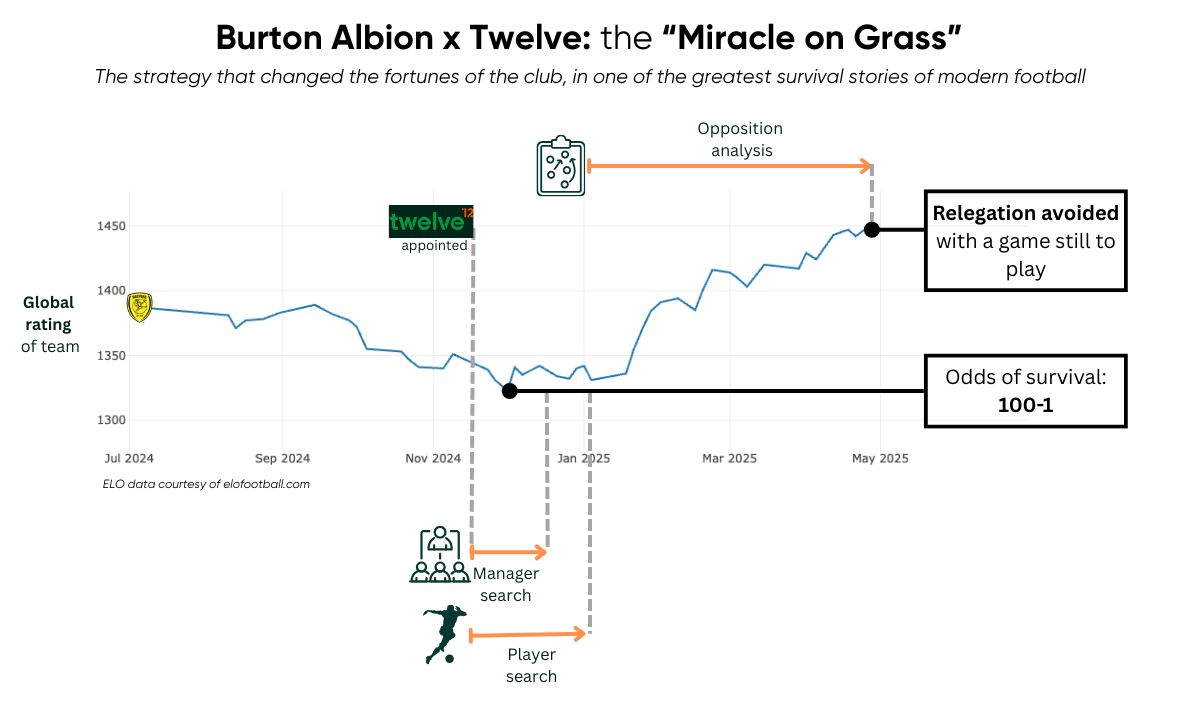
Very few clubs manage that kind of consistency – and to outsiders, it can look like they’re being “data-driven”. But the truth is no club, no business, can use data well without long-term clarity and stable leadership. It’s that foundation that lets data guide decision-making, not the other way around.
I’m proud of what the club achieved. And I’m very proud of the role that Twelve Football and I played in such a perfectly executed “great escape”.
Back in December, shortly – about an hour in fact – after joining Twelve Football, I was asked to work with Burton Albion. Twelve had been brought in to help the club reset at that point in the season. With the help of Ágúst, we built a data-informed strategy that – if executed to perfection – just *might* offer a route to survival.
The outcome was a clear framework: 10 critical metrics and 10 key targets. Hit those and the season could be turned around.
Next step: find a manager who could do it.
Burton Albion did an excellent job putting together a credible longlist – managers with the right mix of experience and skill, giving us as broad a pool to research as possible. Twelve Football then built a manager scorecard, shaped around the 10 key metrics we’d agreed on, to help identify who was most likely to keep the club up.
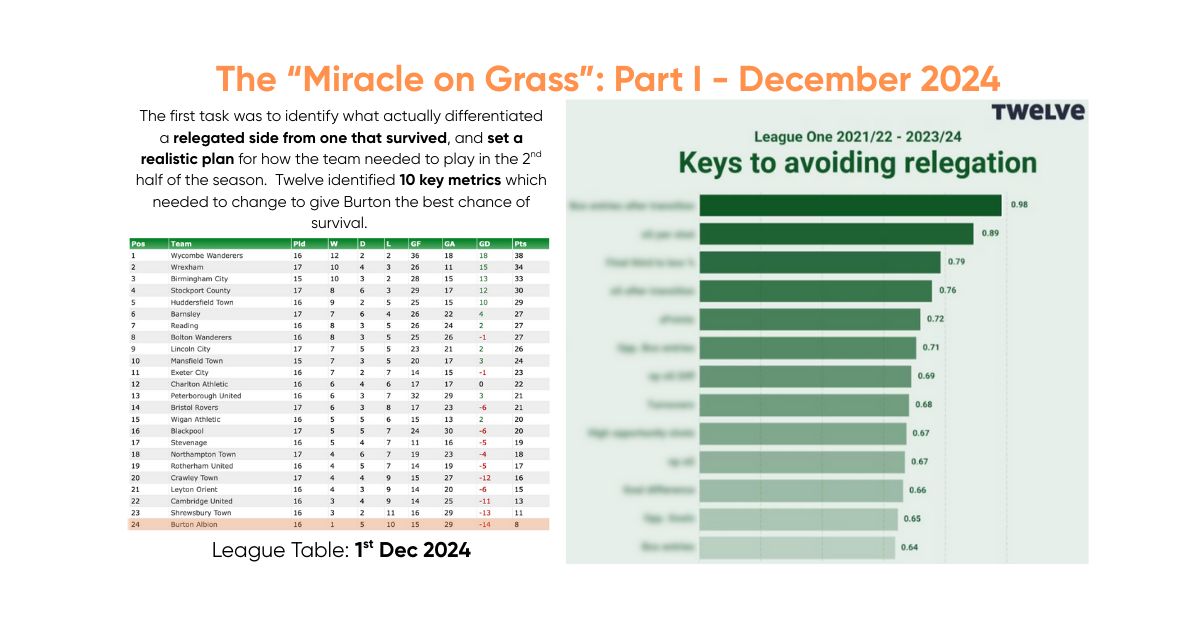
Anyone who’s worked in football for any length of time knows that hiring a manager mid-season is always a tough job: it’s easy to be reactive and difficult to be objective at a time when things have (usually) not been going according to plan. That’s why it was so encouraging to see the club pull together every available strand of insight – blending personal knowledge of the candidate pool with the hard evidence from the data – to not just land on a shortlist, but ultimately select someone who ticked as many of the right boxes as possible.
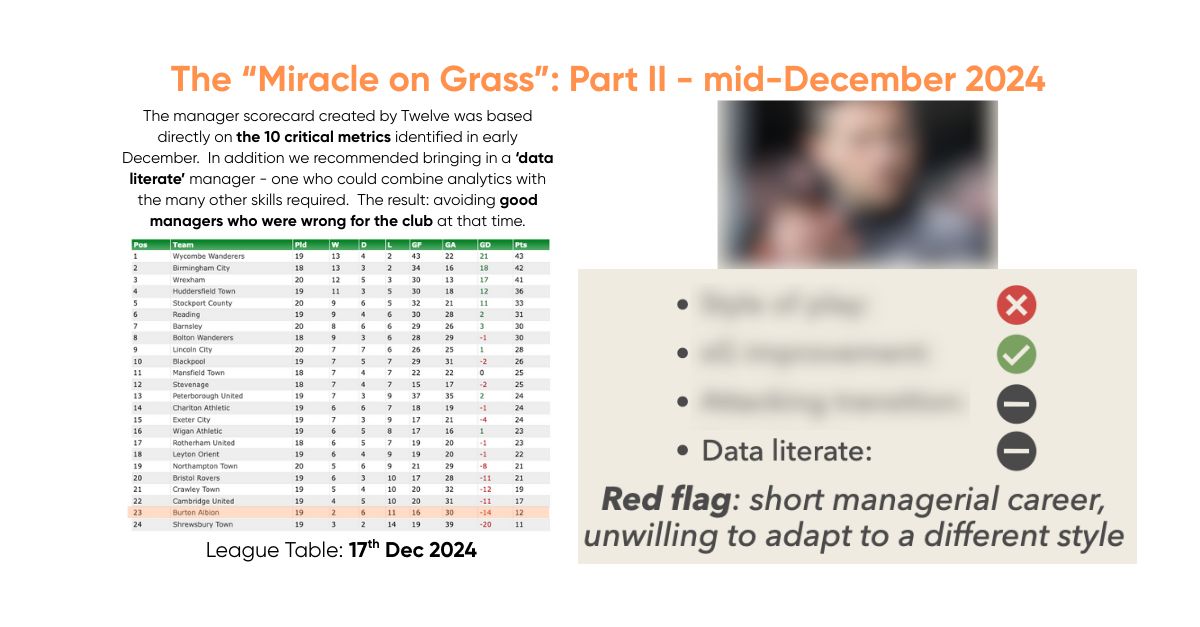
That meant rejecting very good managers who weren’t right for the club at that time, and picking exactly the right person for the job at hand.
By the time Gary Bowyer was unveiled, the team had picked up a win, but their survival position had worsened – now nine points and three goal difference off safety. He was facing an uphill struggle.
While Gary and his team got to work on the pitch, the club was equally busy behind the scenes – identifying players who were not only available, but suited to the rejigged style of play.
This is where the 10 critical metrics identified right at the start really came into their own, helping sharpen focus on what really mattered in each position to support a clear, short-term plan for survival.
Twelve Football’s role at this stage was to narrow the focus even further – identifying players likely to be available and adapting standard positional profiles to assess them objectively against the team’s revised needs.
One such player was Jón Daði Böðvarsson. Struggling for minutes at Wrexham, he emerged as someone who both fitted the profile and had a strong track record in the areas Burton needed most.
As I wrote at the time: “Given his age and profile … though never a prolific striker … he has been one of the better target players in League One over recent seasons, ranking 15th out of 80 on that profile … and as such represents a very credible option for this role.”
But while recruitment work was ongoing, the club’s overall position was getting worse. By late January, Burton were still bottom, 11 points and 2+ goal difference adrift of safety. With just two wins from 25 games, survival odds had lengthened to 100-1.
Once the transfer window had shut, Gary and his team set about the hard work of integrating them into the squad – and the squad into a new style of play.
One thing that’s harder to measure with data is character: how players respond under pressure, whether they’re ready to come in and hit the ground running. Credit to Gary and the management team – they brought in players who had both the skillset and the right mentality to deliver from day one.
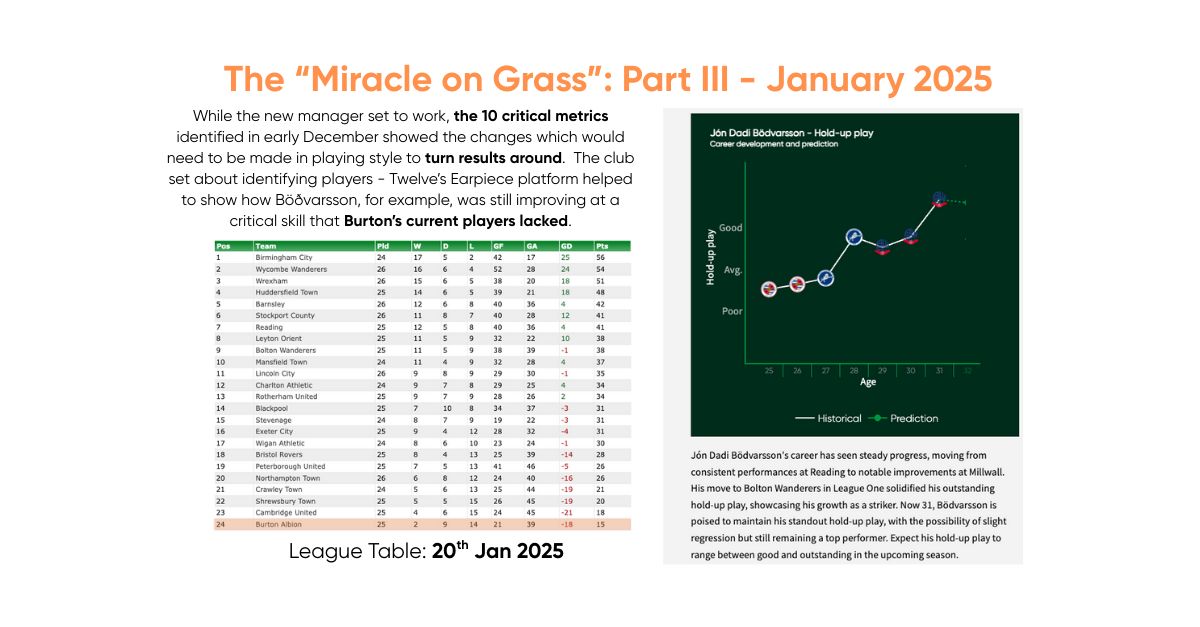
Results started to pick up: three straight wins in a week in late January, and just one defeat across all of February. But underneath the surface, there were still concerns. Some of the 10 key metrics that Twelve were tracking hadn’t improved, despite the upturn in form.
That’s where Gary’s approach really stood out. He’d had limited exposure to football data of this kind before – but quickly immersed himself. He worked to understand what each metric meant, how they interacted, and how he could use them to motivate the squad.
By mid-March, Burton had jumped from bottom of the table to 21st – still in the relegation zone, but with a glimmer of hope. However, they were still six points and nine goals from safety. And there were just 10 games left to play.
From January I had been sending pre-match reports to Michael and Gary built straight from data in Twelve Football’s Earpiece platform. These covered everything from shifts in style and the likely impact of new signings, to areas where Burton might hurt the opposition and what threats they’d likely face in return. Later, we started building out ways to target specific patterns in the opposition’s build-up.
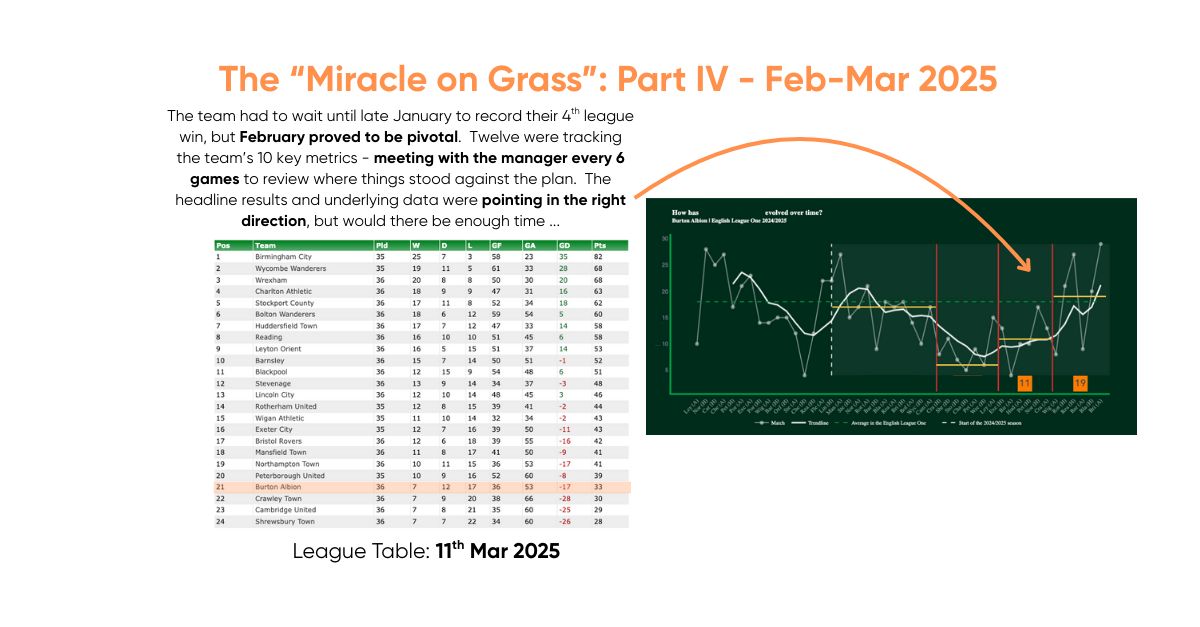
It was becoming a really fruitful collaboration. The detailed tactical plans Mack and Gary were crafting were working, and the team kept picking up points, closing the gap, bit by bit.
By the end of March, they were still six points off 20th. But critically they had a game in hand AND a better goal difference. With just eight games to go, they were maybe just one good result away from something incredible. But April meant facing Birmingham, Wrexham and Charlton – three of the top four. So where was that one good result going to come from?
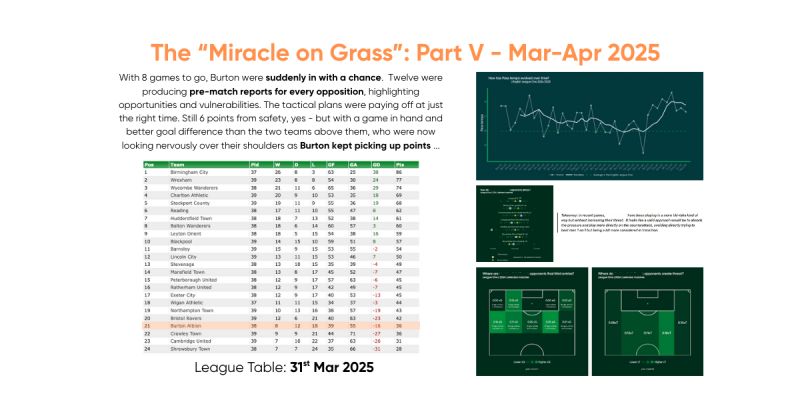
Things went from bad to worse 10 minutes into the Wrexham game when Charlie Webster, one of the breakout stars of the season, was shown a red card. The team battled hard with 10 men but eventually lost, and Webster was suspended for the next four games.
Burton only managed one win in that spell, which meant it all came down to the match against Cambridge United – another side fighting for survival.
The equation was clear: win, and Burton were all but safe on points and goal difference. Anything else, and relegation would be the more likely outcome.
What followed was the kind of game you never forget. Two red cards in the space of a minute meant both sides played the second half a man down. Böðvarsson gave Burton the lead after the break, but Cambridge equalised in the 84th minute and threw everything forward in search of a winner.
Then, deep into stoppage time – 93rd minute – Burton’s Dylan Williams, who hadn’t scored all season, received the ball and from a tight angle somehow squeezed it past the Cambridge keeper. His first goal for the club, and one that changed everything.
Survival assured, and the Miracle on Grass was complete.
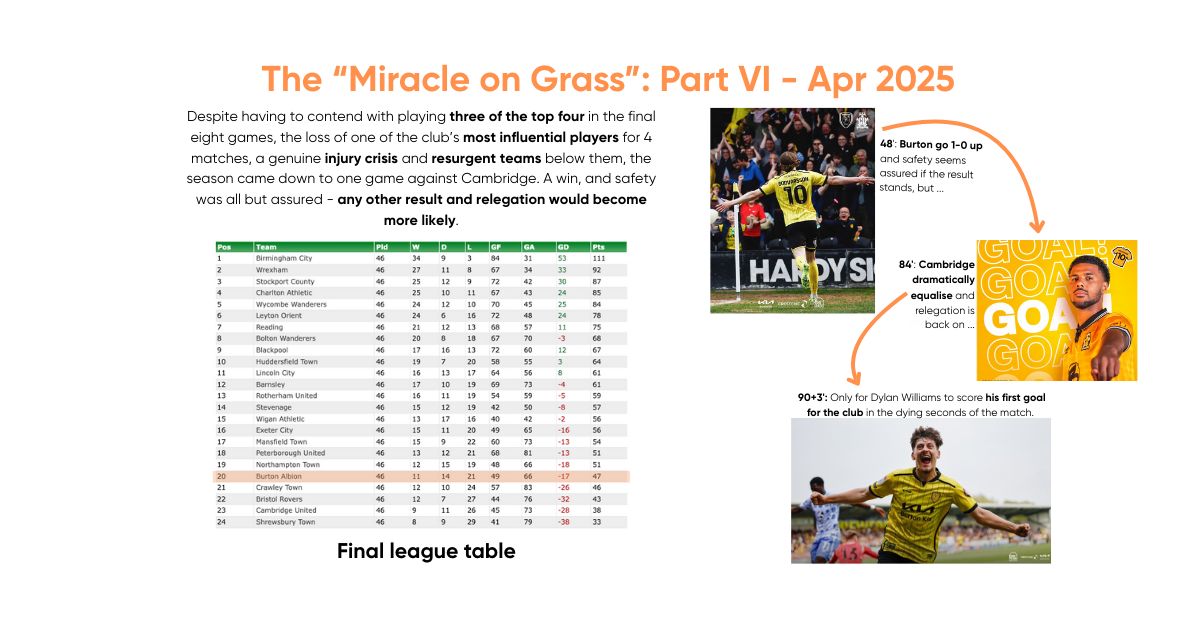
Follow Us
For latest updates, follow us on X at @ground_guru





